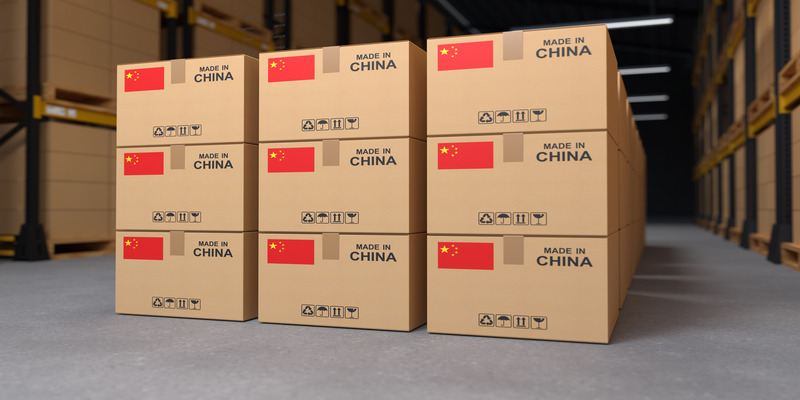Not too long ago, Walmart used to only allow American based companies to sell on its third-party marketplace, even if those companies were sourcing their goods from China.
But due to pressure from Amazon, Temu and Shein, Walmart officially opened up its marketplace to international sellers in 2021. And within just one year, a whole slew of Chinese language websites starting popping up out of nowhere teaching Chinese sellers how to sell on Walmart.
In this post, I explain to you exactly what’s happening right now, what it means for 3rd party Walmart sellers and what you must do right now to prepare yourself as an ecommerce seller.
Get My Free Mini Course On How To Start A Successful Ecommerce Store
If you are interested in starting an ecommerce business, I put together a comprehensive package of resources that will help you launch your own online store from complete scratch. Be sure to grab it before you leave!
Walmart Is Heavily Recruiting Chinese Sellers
Walmart opened up its doors to China back in 2021 so what’s different for this year? Even though Walmart allowed Chinese sellers onto the platform several years ago, they didn’t make a concerted effort to recruit Chinese sellers until recently.
According to data from Marketplace Pulse, new Chinese sellers have spiked since the end of 2023. For example, in April 2023, new Chinese sellers represented just 1.8% of all new sellers on the Walmart Marketplace.
But by October 2023, that figure reached 24%, and by April of 2024, it hit 73.8%, a record high. Now, 74 out of every 100 people who sign up to sell on Walmart are Chinese sellers based in China.
This large influx is due to the fact that Walmart is investing heavily into resources to onboard new Chinese sellers this year.
For example in February, the company released a Seller Central dashboard interface in Chinese, and held a seller summit in Shenzhen in March. And, they are actively training and guiding Chinese sellers throughout the process of joining and succeeding on the platform.
I’ve been selling online since 2007 and Walmart is following in the exact same footsteps as Amazon. Back in 2016, Amazon did the exact same thing by personally onboarding Chinese sellers onto their platform.
Amazon even offered a special service called Dragonboat which allowed Chinese sellers to ship directly into Amazon fulfillment centers quickly and at an extremely low cost, a service that was unavailable in the beginning for US sellers.
Fast forward a few years later and over 50% of the top sellers on Amazon are now from China.
The exact same thing will happen to Walmart except to an even greater degree because Walmart didn’t have that many American third party sellers to begin with.
My colleagues who sell on both Amazon and Walmart say that Walmart only accounts for 4-6% of their revenue when comparing Amazon vs Walmart.
Walmart Is Full Of Chinese Knockoffs
If you go on Walmart.com right now and do a search for any product, you won’t find very many American brands.
For example, the other day I was looking for a lavalier mic for my phone. So I typed in “Lavelier mic” into Walmart.com expecting to find familiar names like Rode, Shure and DJI but not a single one of those brands came up.
Instead, my search results were littered with brands like Nobie, Fulencu and Rony. The same exact thing happened when I searched for webcams.
All I got were random Chinese brands selling super cheap products at impossibly low prices. My conclusion? Walmart is literally a junkyard of Chinese knockoff brands all based in China.
Competition From Temu Forced Walmart Towards China
Once upon a time, Walmart used to only allow American based companies to sell on the platform.
But competition from companies like Temu and Shein pushed them over the edge. For all of you who are unfamiliar with Temu, it’s a Chinese based marketplace that ships products direct from China to the US at rock bottom prices.
The US tax laws are extremely favorable to Chinese sellers shipping direct from China to the US. According to the deminimus rule, any international shipment into the US does not have to pay any customs duties or taxes as long as the order is valued at less than $800.
As a result, Chinese sellers do not have to pay any taxes to sell in the US. Meanwhile, US sellers have to pay hefty tariffs and customs duties when importing containers of goods which adds to their costs.
This law doesn’t make sense and needs to be rectified. Meanwhile, companies like Temu and Shein are eating Walmart alive.
According to GWS Magnify, Temu had 82.4 million active shoppers on its app in September 2023 and they’ve only been around for 2 years.
By comparison, eBay only drew 40 million online shoppers that month, while Temu was tied with Walmart, which had 85.5 million online users.
In just 2 years, Temu has caught up with Walmart in terms of traffic and is basically beating Walmart at its own game of low cost products. If this pattern continues, Walmart’s online marketplace could be finished before it gains any momentum.
If you want to envision what Walmart will look like in the next few years, just take a look at Amazon today minus all of the premium high end products.
Walmart will literally become a cesspool of cheap Chinese products and here’s the thing. Walmart was never known for selling high end merchandise to begin with and it’s going to be hard for them to out Temu Temu.
Every Marketplace Is Selling Out To China
Even though Walmart has sold out to China, they are not alone. Every single marketplace seems to be doing the exact same thing.
For example, Etsy recently opened up its marketplace back to Chinese sellers this year due to severe financial pressure.
The past 3 years haven’t been good for Etsy’s stock and their gross sales have been decreasing year over year.
What’s the easiest way to boost profits on a stagnant marketplace? Bring China back on the platform!
Like Walmart, Etsy banned Chinese sellers on the platform in 2021 due to worries about protecting the integrity of the handmade marketplace.
But because of Wall Street pressure, they added China back on to the Etsy payments approved country list this year.
From Etsy’s perspective, this will be fantastic for earnings as it opens the market up to 1.4 billion new people. For consumers and Etsy sellers, not so much.
Can you imagine a mom and pop shop on Etsy who hand makes all of their goods going up against a chinese factory who doesn’t have to pay any taxes and employs cheap labor? They can’t compete!
Recently Amazon announced a brand new marketplace to compete directly against Temu. As we speak, Amazon is busy in China rounding up factories to sell products directly to the US from China at rock bottom prices to fight Temu and Shein.
And this time, Amazon doesn’t care about shipping times. These new Chinese products will take 9-11 days to arrive compared to 2 day prime shipping.
Why did Amazon make this drastic “un Prime like” move? Temu and Shein have decimated Amazon’s sales for the last 2 years and Amazon’s apparel business is down 30% year over year.
It’s just a matter of time before every major marketplace in the United States is just a junkyard of all of the same unbranded stuff from China.
China Is Taking Over
Here are some stats to illustrate what’s happening. This year, Chinese 3rd party sellers are expected to surpass 66.8% of Amazon’s online sales.
Right now, Walmart’s reliance on third-party vendors is estimated to constitute about 11.3% of its total annual online revenue. But this number will grow exponentially this year due to their Chinese onboarding efforts.
The consumer economy in China is softening, which is forcing Chinese companies to look outside the country for customers. In other words, there’s a huge demand in China to tap into the US market.
But the difference between China and the US is that China actively implements policies that are favorable for their citizens.
For example, the Chinese government often offers subsidies to Chinese factories so they can lower their prices even more in US markets. With government support, even the smallest Chinese brands can go overseas and make money abroad and cut out the middlemen.
Meanwhile, US laws like the deminimus rule actually make it harder for someone in the US to compete. Both Chinese and US sellers should theoretically be on the same footing in terms of having to pay taxes. It seems unfair for China to be able to sell tax free.
The Implications For Small Businesses
What are the implications for ecommerce sellers like you and me? And more importantly, what should you do about it?
First off, you should not target the low end customer. The reason companies like Temu and Shein are succeeding right now is because they are literally selling cheap throwaway junk.
Depending on who you talk to, we’re either in a recession right now or about to be in one and Americans are extremely price conscious. Once upon a time, it was all about fast delivery and speed. Today, price is more important because the majority of people in the US are hurting.
Across the country, many Americans are struggling with mounting credit card debt. The most recent data from the Federal Reserve reveals that credit card debt currently sits at $1.12 trillion.
To succeed in ecommerce, you do not want to be targeting the people in debt. You want to target the higher end customers. Remember, the goal of running a small ecommerce business is not to start the next amazon.com or the next Walmart.
Most people like you and me only need to make 6 or 7 figures per year to be more than well off and achieve financial freedom.
So stop selling commodity products you find on Alibaba and just throwing them up online. It’s not going to work.
How To Beat Chinese Sellers
To beat Chinese sellers, you must sell products that the Chinese can not sell or market well.
Say what you will about China, but in general, US consumers tend to distrust anything topical or ingestible that is made from there.
Another way to stand out is to offer a service on top of your products that is custom.
Recently, my wife and I have doubled down on personalization for all of our products. We’ve acquired 2 brand new fabric printers this year, the Sublistar Star IV A3 printer and the Uninet IColor 650 white toner printer.
We also have 6 embroidery machines in house that run all day long doing custom embroidery.
My rationale is that a seller in China will be less likely to offer personalization on a per piece basis for their products. Also, someone willing to pay for personalization wants to have the product done right and there’s often some hand holding involved in the process.
But most importantly, you have to learn how to create content to build your brand. Nothing being sold online is new or novel. It’s just the same old stuff marketed differently.
For example, we sell handkerchiefs in our shop which is a generic product. It’s literally a piece of fabric. However, we reimagined the use of handkerchiefs for weddings and funerals, creating a new premium market for them.
Early on with our business, we created craft tutorials on our blog which funneled traffic directly to our shop. This year, we’re doubling down on short form video to create brand awareness.
Basically, you have to have a strong value proposition and a name to last the test of time and the product in many cases matters less than the marketing.
My favorite example of genius marketing is with Liquid Death. This company basically sells water in a beer can. There’s nothing that really tastes different about their water but Liquid Death is a 9 figure company because of their ads.
As a parent of two teenagers, I know that every kid wants to look cool. Drinking Liquid Death gives the impression of drinking beer, making them feel like rebels, which is a huge hit among kids.
Liquid Death markets the coolness factor, focusing more on the emotions and less on the product itself.
Now that you understand what’s going on with this marketplaces like Walmart, Amazon and Etsy, I hope you realize that it’s now more important than ever to own your own website and to create content around your brand.

Ready To Get Serious About Starting An Online Business?
If you are really considering starting your own online business, then you have to check out my free mini course on How To Create A Niche Online Store In 5 Easy Steps.
In this 6 day mini course, I reveal the steps that my wife and I took to earn 100 thousand dollars in the span of just a year. Best of all, it's free and you'll receive weekly ecommerce tips and strategies!
Related Posts In Ecommerce Marketplaces
- Amazon Vs Walmart: Which Marketplace Is Better For Online Sellers?
- Top 17 Ebay Alternatives To Sell Your Stuff Online
- A Guide To Shopify Handshake And How To Get Started
- Is Redbubble Legit? A Full Review For Creators And Shoppers
- Is GOAT Legit? Read This Review Before You Buy

Steve Chou is a highly recognized influencer in the ecommerce space and has taught thousands of students how to effectively sell physical products online over at ProfitableOnlineStore.com.
His blog, MyWifeQuitHerJob.com, has been featured in Forbes, Inc, The New York Times, Entrepreneur and MSNBC.
He's also a contributing author for BigCommerce, Klaviyo, ManyChat, Printful, Privy, CXL, Ecommerce Fuel, GlockApps, Privy, Social Media Examiner, Web Designer Depot, Sumo and other leading business publications.
In addition, he runs a popular ecommerce podcast, My Wife Quit Her Job, which is a top 25 marketing show on all of Apple Podcasts.
To stay up to date with all of the latest ecommerce trends, Steve runs a 7 figure ecommerce store, BumblebeeLinens.com, with his wife and puts on an annual ecommerce conference called The Sellers Summit.
Steve carries both a bachelors and a masters degree in electrical engineering from Stanford University. Despite majoring in electrical engineering, he spent a good portion of his graduate education studying entrepreneurship and the mechanics of running small businesses.























